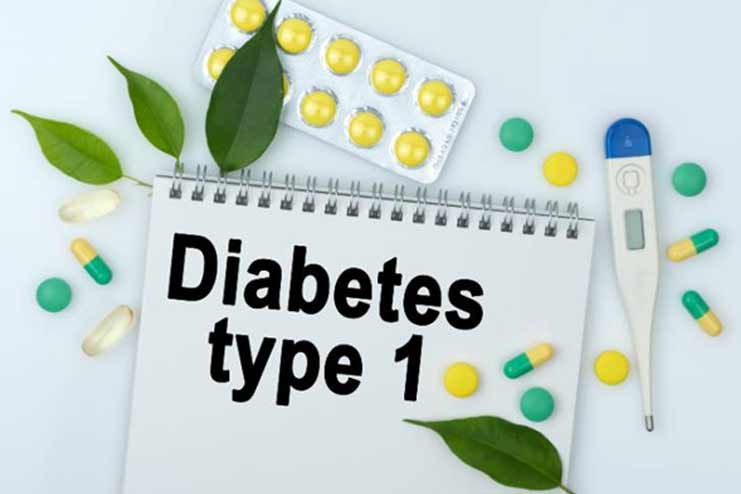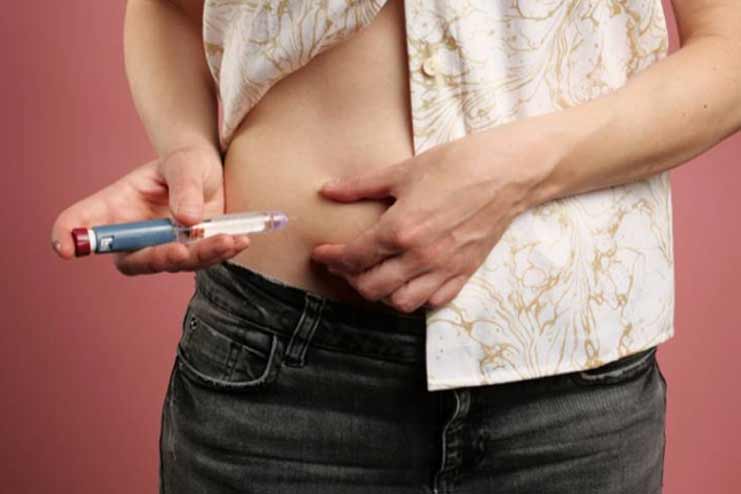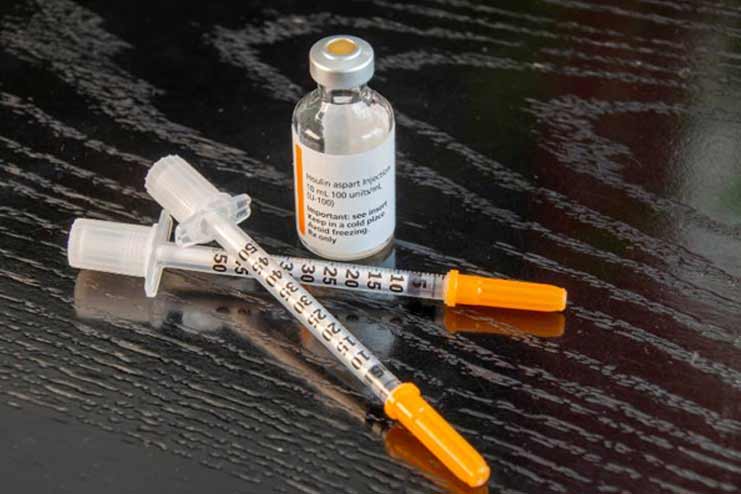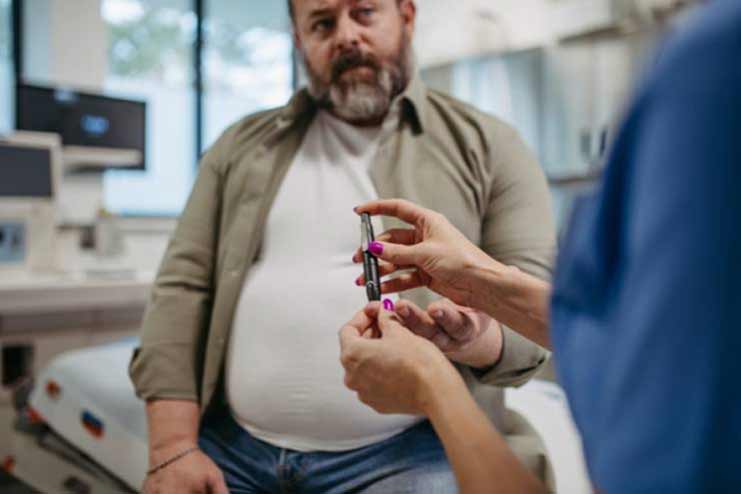Affiliate Disclaimer
Some links in this article are affiliate links. We may earn a small commission if you make a purchase through these links, at no extra cost to you. We only recommend products we find useful to our readersDiabetes is known to be one of the most common diseases in the world. According to estimates, the number is sharply rising. Over 29 million Americans now have diabetes, a 50% increase in cases over the previous ten years. It affects more than 380 million people in the world. We will discuss diabetes mellitus Type 1 in this article.
What is Type -1 Diabetes or Diabetes Mellitus Type -1?
Diabetes impairs the body’s capacity to create or react to the hormone insulin. As a result, carbohydrate metabolism becomes abnormal, and blood sugar levels rise. Diabetes comes in two varieties: type-1 and type-2.
With type-1 diabetes, the body’s immune system attacks part of its pancreas. However, the immune system incorrectly views the pancreatic cells that produce insulin as alien, destroying them. We refer to this attack as an autoimmune illness.

Cells called islets sense glucose in the blood. In response, they produce the necessary amount of insulin to make blood sugar levels normal. Insulin allows sugar into the blood for energy. Without insulin, the sugar stays and builds up in the blood. As a result, the body’s cells starve from the lack of glucose.
Your body naturally produces glucose, which it uses as fuel. It obtains glucose from food and stores extra glucose in the liver and muscle tissues. The body releases this stored glucose when it needs additional energy between meals or during sleep. When insulin levels are low, the body does not use glucose.
7 Best Remedies For Arthritis And Treatment At Home
High levels of blood sugar can damage
- Eyes
- Kidneys
- Heart
It can also lead to coma and can be risky to live.
What is Type – 2 Diabetes?

It is also called non-insulin-dependent diabetes. It generally develops after the age of 35, but younger people are also developing this disease. Although type 2 diabetics can manufacture some insulin, it is frequently insufficient. Insulin is essential for the blood cells to open for glucose to enter. However, due to a lack of insulin, the cells do not open. It’s referred to as type 2 diabetes or insulin resistance.
People with obesity and a sedentary lifestyle often develop this type of diabetes.
Causes of Type-1 Diabetes
Although the exact causes of either form of diabetes are unknown, research has unearthed some of its potent mysteries. In the Type I variant, the body’s immune cells damage the cells that produce insulin, preventing natural insulin production.
Although the exact cause of the immune system attack is unknown, some ideas propose that persons with the condition have hereditary risk factors. At the same time, other theories believe that environmental variables are more likely to be the cause. Another school of thought maintains that an individual’s immune system attack happens after contracting a particular type of virus. Regardless, the body can no longer produce insulin. Thus, the individual needs regular injections of artificial insulin.
Symptoms of Type 1 Diabetes

Early Symptoms:
It will help if you do not disregard the numerous early symptoms of Type 1 Diabetes, as they frequently appear. These include frequent urination (polyuria) and extreme thirst (polydipsia), which are symptoms of the body trying to rid itself of extra glucose. People often feel extreme hunger, or polyphagia, when their cells are starved of glucose. Even with increasing food consumption, there is unintentional weight loss, and the body experiences chronic weariness due to insufficient energy.
Advanced Symptoms:
If the illness worsens, more severe symptoms could manifest. Elevated blood sugar levels can alter the eye’s lens, causing blurred vision. Persistent infections such as skin or gum disease and slow-healing wounds may also appear as the immune system deteriorates.
Diabetic Ketoacidosis (DKA):
DKA is potentially a fatal side effect of untreated or inadequately controlled Type 1 Diabetes. It happens when the body begins metabolizing fat for energy, which causes the blood to become more concentrated in ketones. DKA symptoms include nausea, vomiting, dizziness, and breath with a fruity scent. Getting medical help right away is essential to avoiding serious consequences.
The Role of Insulin

Type 1 Diabetes occurs when the destruction of islet cells leads to insufficient insulin production. Since insulin is crucial for regulating blood sugar levels, a lack of it causes various issues. Therefore, insulin plays a vital role in managing the condition, and this is the process of how insulin is produced and its functions in our body:
- The pancreas secretes insulin into the bloodstream.
- Insulin circulates and allows that sugar to enter our cells
- The amount of sugar in your blood is decreased by insulin
- As your blood sugar level lowers, your insulin secretion from the pancreas reduces
The Role of Glucose
Glucose is a very vital energy source for our muscles and tissues. We get glucose from the foods we eat and our liver. When we need energy, our cells take in sugar from the blood, and the liver stores glucose as glycogen for later use. If our blood sugar levels drop and we haven’t eaten, the liver can turn glycogen back into glucose to energize us. In people with type 1 diabetes, the body doesn’t produce insulin, leading to dangerously high blood sugar levels, which can be life-threatening. Understanding glucose is essential for managing energy and health.
Importance of Early Diagnosis

Early detection of Type 1 Diabetes symptoms is essential for timely diagnosis and successful treatment. Timely intervention, which can stop the disease’s course and reduce the likelihood of serious complications, is made possible by early detection. When people notice symptoms like increased thirst, frequent urination, and unexplained weight loss, they can get help before the illness gets worse.
If not managed, Type 1 Diabetes can cause significant health issues. Diabetic ketoacidosis (DKA), is a potentially fatal illness that arises when the body begins breaking down fat for energy and raises blood ketone levels, is one of the most severe hazards. Uncontrolled diabetes can lead to long-term issues like kidney, nerve, eye damage, as well as an increased risk of cardiovascular disease. Early detection is crucial to prevent these effects and ensure better long-term health.
Treatment for Type-1 Diabetes
One has to take insulin and manage diet and exercise to keep blood sugar levels within a healthy limit.
-
Insulin
People with type-1 diabetes must take insulin every day, generally through injection. Some use insulin pumps. Insulin needs vary for the entire day. You may have to measure your sugar to determine how much insulin you need.
-
Diet and exercise

People with diabetes should have regular meals and snacks to stabilize their blood sugar. Working with a dietitian for a healthy, balanced diet is a good idea. Exercise can also impact blood sugar levels, so managing insulin levels alongside physical activity is essential. Type 1 diabetes happens because the body doesn’t produce enough insulin. You can manage this condition by taking insulin, eating healthy, and exercising regularly.
When to Seek Medical Help

It’s critical to get medical attention right away if you or a loved one exhibits signs of Type 1 Diabetes, such as acute exhaustion, frequent urination, excessive thirst, or unexplained weight loss. Even while the early symptoms might not seem severe, they can quickly worsen and lead to illnesses like diabetic ketoacidosis (DKA), which needs to be treated right away. Seek emergency attention immediately if symptoms like nausea, vomiting, disorientation, or fruity-smelling breath appear.
Effective management of Type 1 Diabetes requires regular blood sugar monitoring and check-ups. Prompt medical action can avert severe consequences like kidney, eye, and nerve harm.
Conclusion
As an autoimmune disease, type 1 diabetes necessitates prompt diagnosis and cautious treatment. For awareness and prevention, it is essential to comprehend its causes, including autoimmune reactions and genetic variables. Early diagnosis depends on the ability to recognize symptoms, which can range from extreme thirst and frequent urination to more serious indications like blurred vision and diabetic ketoacidosis (DKA). Keeping up with the disease and its progress is crucial to properly managing health. To provide the best care and avoid difficulties, always seek the advice of healthcare specialists and schedule routine examinations. Early intervention can considerably enhance the quality of life.
-
Feb 2017Written by Pradeepa Polineni
-
Aug 2024Edited by Ankita
1References
- https://www.mayoclinic.org/diseases-conditions/type-1-diabetes/symptoms-causes/syc-20353011
- https://my.clevelandclinic.org/health/diseases/21500-type-1-diabetes
- https://diabetes.org/about-diabetes/type-1
- https://www.nhsinform.scot/illnesses-and-conditions/diabetes/type-1-diabetes
- https://www.webmd.com/diabetes/understanding-diabetes-symptoms
- https://www.cdc.gov/diabetes/signs-symptoms/index.html
- https://www.yalemedicine.org/conditions/type-1-diabetes-symptoms-causes-treatments
- https://www.medparkhospital.com/en-US/disease-and-treatment/diabetes-mellitus
- https://www.msmc.com/diabetes
In this Article


















